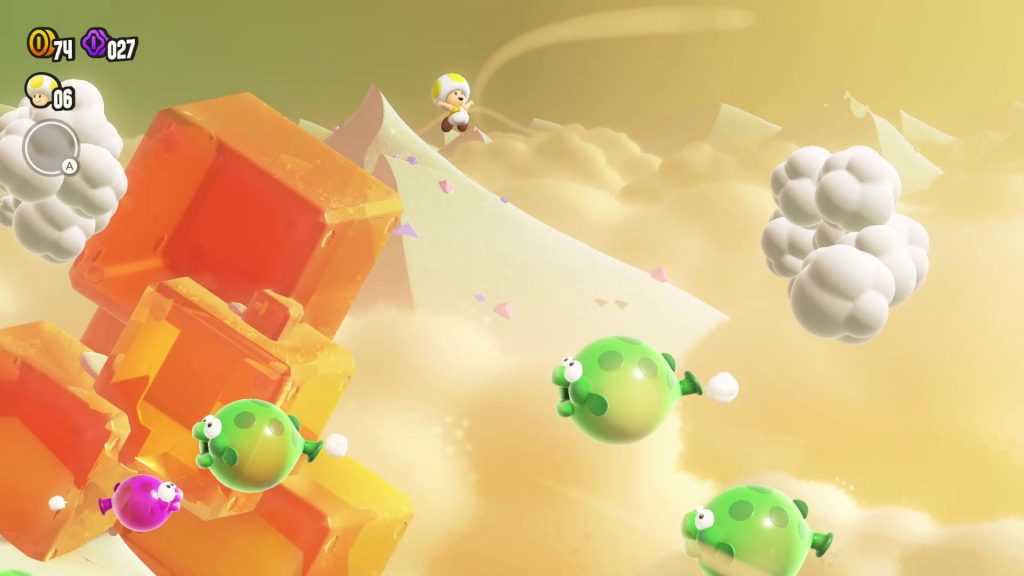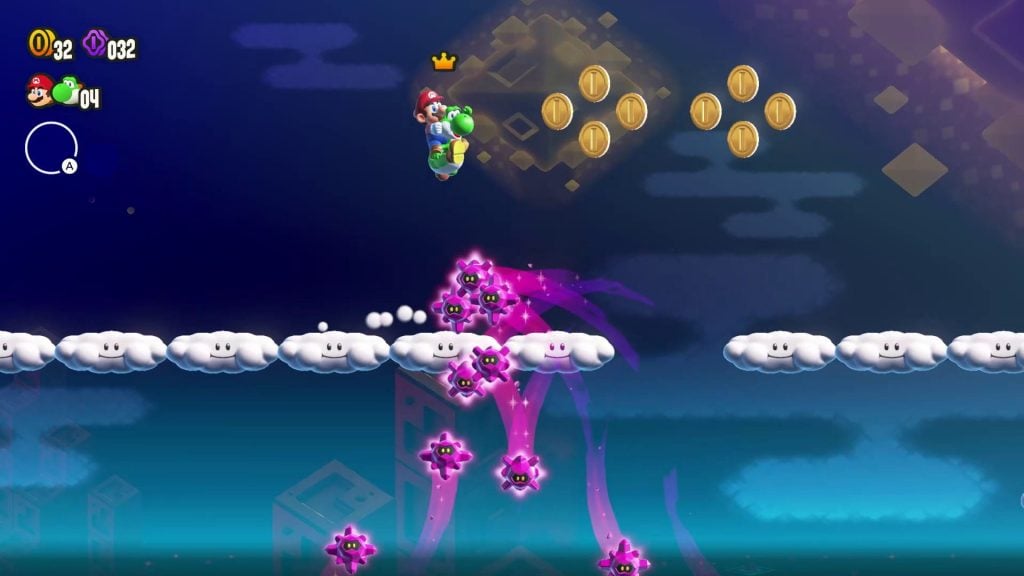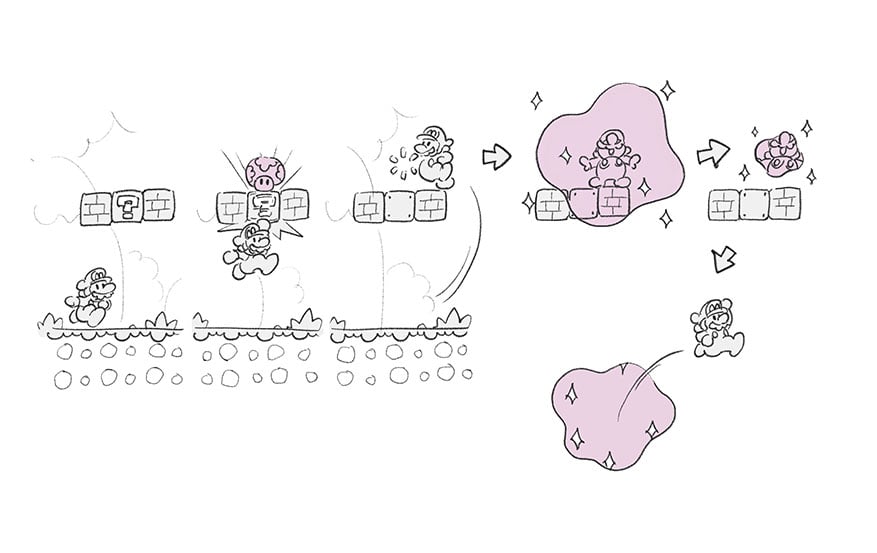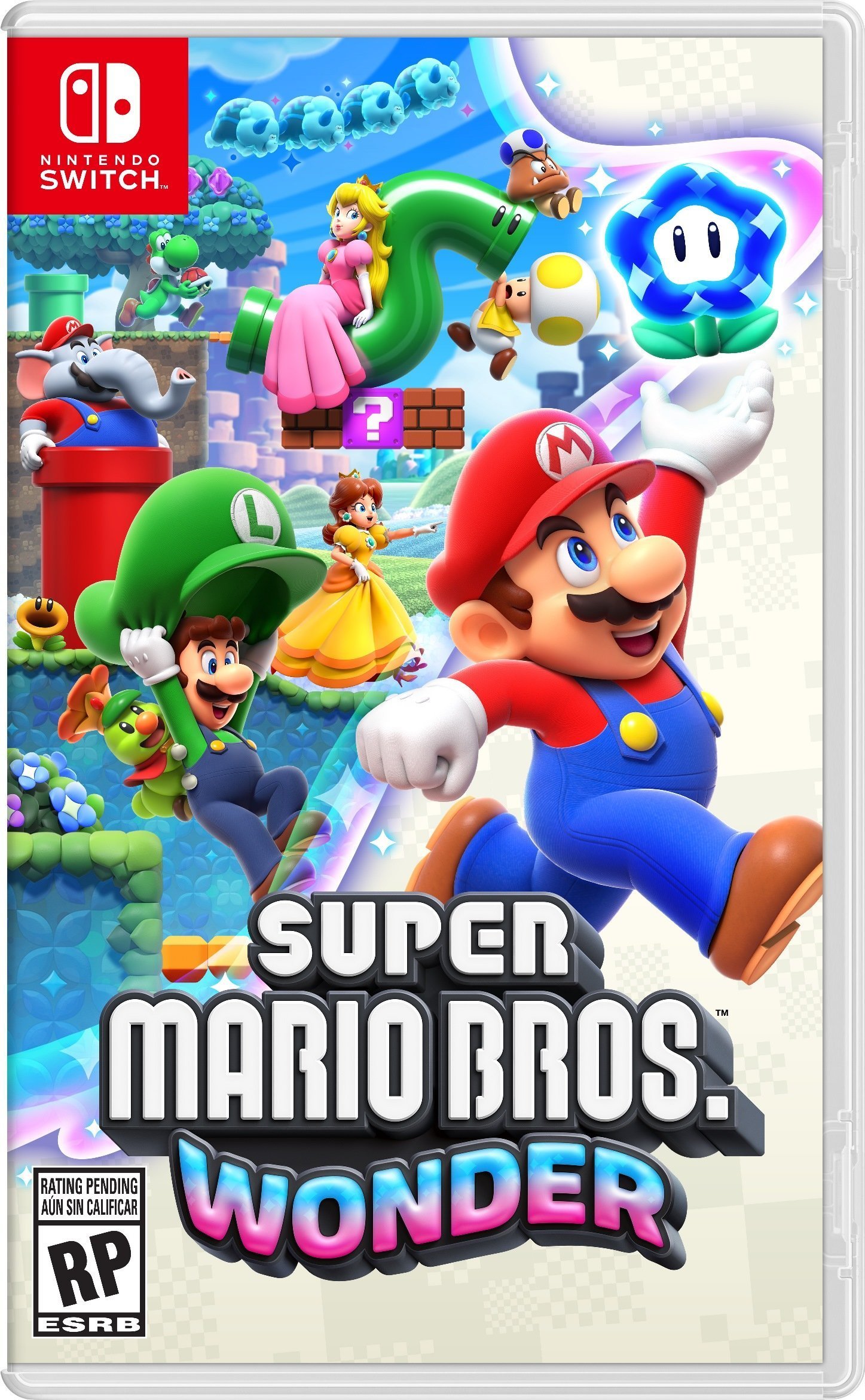Super Mario Bros. Wonder is only a few days away, and it’s easy to see that this isn’t your run-of-the-mill 2D Mario game. To celebrate the title’s upcoming launch, Nintendo UK sat down with Producer Takashi Tezuka, Designer Koichi Hayashidia Composer, the legendary Koji Kondo, and Director Shiro Mouri to discuss how Wonder came to be.

It’s a strange, new world.
Interestingly, Tezuka mentioned that while working on Super Mario Maker 2, he was inspired by fresh ideas introduced to the world of Mario Wonder. His goal was to ensure that whatever followed in the realm of 2D Mario gaming would be a departure from what we’ve seen before.
Where did you get the idea for this new game, which has been a long time coming?
Tezuka: I was already thinking about what kind of Mario game we should make next when we were developing Super Mario Maker 2. At the time, some journalists and players were saying that Super Mario Maker had eliminated the need for another 2D Mario game. But I kept saying that the next Mario game would be completely different from Super Mario Maker, so there was no need to worry. In hindsight, those kinds of sentiments may have been what motivated me to come up with ideas for this game.
So during development of Super Mario Maker 2, you were already confident that you could create something completely fresh.
Tezuka: Well, yes.
Hayashida: No, no, I wasn’t! (Laughs) Players have created so many different courses in Super Mario Maker and Super Mario Maker 2 that I was worried about whether we could do anything new that would go beyond that. …But apparently, Tezuka-san thought it would be fine. (Laughs)
Tezuka: I’m an optimist. (Laughs)
Mouri: Well, I wasn’t optimistic, but I was more focused on creating something completely different from the New Super Mario Bros. series than how it would compare to Super Mario Maker.
Hayashida: Yes, I remember Mouri-san saying during the early stages of development that we shouldn’t use the same game engine as in the New Super Mario Bros. series but rather create a new game engine that would serve as a foundation for future 2D Mario games. Thankfully, Tezuka-san also told us to prioritise content over schedule.
Tezuka: We wanted to create a game with much more to offer than ever before, so this time, we didn’t set a fixed time period for development, which is usually decided before we kick off. To create something truly enjoyable, we decided to take our time and dedicate ample budget for development without having to worry about the production schedule. So at first, we only had a small group working on the development.

One of the other extremely interesting part about Mario Wonder’s development was the absence of a deadline. Instead, the team was given almost unlimited freedom to create the game that they wanted to make.
With a small number of people and no set deadline, I imagine the development team felt a bit uneasy. Did you have a clear direction of what you wanted to achieve?
Hayashida: Tezuka-san gave us the task of creating a Mario game full of hidden surprises and wonders.
Mouri: When I think back to the first time I played the original Super Mario Bros. (8) game, I remember feeling that it was full of hidden surprises and wonders. Coins would come out when you hit the blocks, and your body would grow bigger with Super Mushrooms. Back then, everything was new and packed with unexpected delights. However, now that the Super Mario games have been enjoyed by players for many years, those things have somehow become ordinary. That’s why Tezuka-san’s goal was to create moments that even modern players would find unexpected and wondrous.
Hayashida: What used to be wondrous back then is no longer wondrous today, neither for players nor for us developers.
Mouri: But the reality of coming up with something that would elicit a sense of wonder from a modern audience was quite difficult. We did a lot of prototyping, but because the development team was small then, it took us time to find the core of what we wanted to achieve.
Tezuka: Previous 2D Mario games featured variations of challenges that would scale up in difficulty as players progressed. This time, though, we decided not to focus on creating such variations but rather on offering a large number of surprises that we thought would be fun. Frankly speaking, I wanted to include at least one element in each course that would surprise or delight players. So I decided to consult Hayashida-san who had been involved in the development of 3D Mario games and ask him how he included such elements in Super Mario Odyssey.
Hayashida: 3D Mario games are sometimes described by the media and players as a “toy box of ideas”, so I decided to apply some of the ideas we used to create 3D Mario games to a 2D Mario game. With these things in mind, we decided to have an idea-sharing session. Everyone from programmers to designers and sound designers joined in and wrote down gameplay ideas on sticky notes, which could be unrelated to their field of expertise, and we made prototypes on the spot. There were just so many ideas. Before this interview, I counted the number of sticky notes we had, and there were over 2,000! (Laughs)
Mouri: Sato-san proposed the idea of players warping to another world by collecting an item. This is what he came up with.

Concept art for world traversal in Super Mario. Bros. Wonder
For even more details on the development of the game, make sure to check out the full interview series over at Nintendo UK!
Leave a Comment



